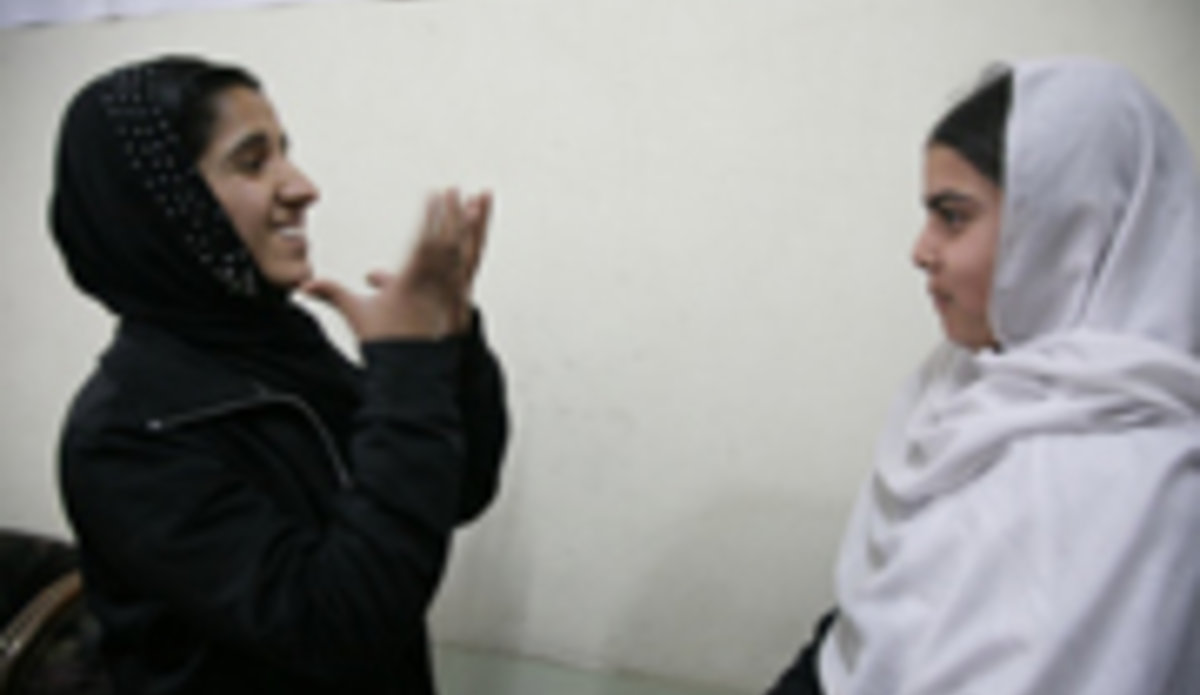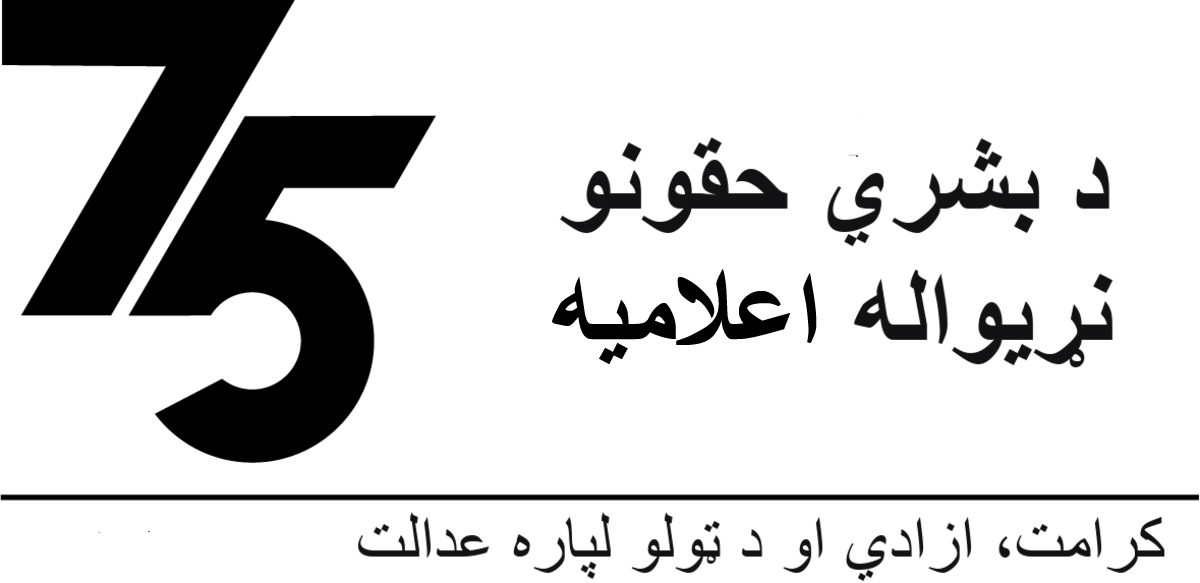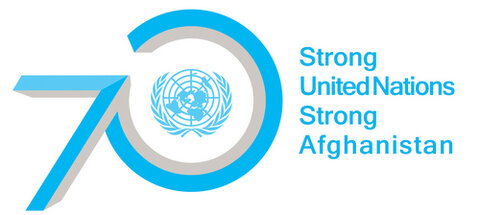Four thousand signs for the hard of hearing in Afghanistan
7 April 2009 - Sign language in Afghanistan is leaping ahead with the publication of 4,000 signs for the deaf and hard of hearing to use. A few years ago only 2,000 signs existed, but with the introduction of additional signs communicating for many thousands of people is gradually becoming easier. By 2010 the hope is to increase this remarkable dictionary to 6,000 signs.
The efforts are all pioneered by the Afghanistan National Association of the Deaf based at a small house in Kabul.
Sitting face to face with each other, Sayed Khan Agha translated the signs made by the association’s deputy director Nangyalai Nezami. “We first got together in 1989 in Peshawar to work out the basic sign language for Afghanistan’s handicapped. We started collecting signs in 1999 and managed to publish a dictionary of 2,000 signs in 2003,” Nangyalai said through intricate sign language.
The signs the association have been developing over the last five years are aimed at helping people with day to day conversations and education. Five days a week some 250 students attend classes at the association. On Saturdays time is set aside for training those who volunteer to learn sign language. Most commonly the volunteers are the parents, relatives and children of those who have difficulties hearing.
“As soon as we have a donor, we can go ahead with the correction of the old version. When we work, we learn and we spot the mistakes in the old version,” said Nangyalai.
“We are working on 2,000 signs to add them to our dictionary. We have already noted down 1,000 signs which we think are necessary. We are planning to complete them all by 2010.”
In 2005 and 2006 Handicap International conducted the National Disability Survey in Afghanistan which estimated the number of people with disabilities in Afghanistan at between 747,500 and 867,100. An average of one in five households has at least one person with a disability.
More than half of the people with disabilities in Afghanistan are living in the Central, Western and Southern regions of the country. 69.7 per cent of Afghans with disabilities are living in rural areas and 30.3 per cent in cities.
According to the deaf association there are 34,000 people between the ages of seven and 18 who are either deaf or blind or both.
“We are not receiving the kind of support we were getting previously. Children have problems with transportation to and from their homes. We were providing lunch for children, now we cannot. We want donors who can support us for a longer period. Now we have support for six months or a one year period,” said Nangyalai.
“We want the attention of the international community and the Government to support us. We want handicapped people to stand on their own feet. They should be part of society as others are and enjoy the same rights in the sphere of politics, the economy and social affairs,” concluded Nangyalai.
By Nazifullah Salarzai, UNAMA
 UN
UN







